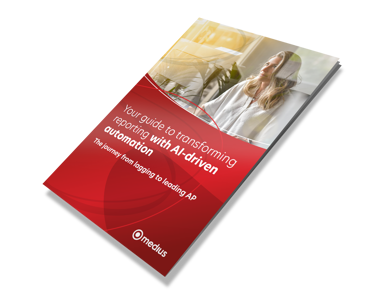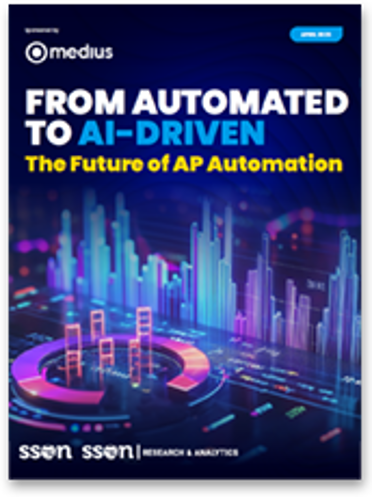How AP automation eliminates month-end closing challenges
Hear what's covered in this article:
Month-end closing represents one of the most demanding periods for finance teams. The pressure to deliver accurate financial statements, reconcile accounts, and meet tight deadlines creates a perfect storm of stress and potential errors. For many AP managers and finance directors, the closing process involves countless hours of manual data verification, invoice matching, and report generation, tasks that are time-consuming and increasingly prone to human error as deadlines approach.
Traditional month-end processes rely heavily on manual intervention, spreadsheet reconciliations, and paper-based workflows that create bottlenecks throughout the organization. Finance teams often find themselves working late nights and weekends, struggling to gather data from disparate systems while ensuring accuracy and compliance. This outdated approach not only impacts employee morale but also delays critical business decisions that depend on timely financial reporting.
The solution lies in accounts payable automation, a transformative technology that addresses the root causes of month-end inefficiencies. By digitizing and streamlining invoice-to-payment processes, AP automation eliminates the manual tasks that traditionally bog down finance teams during closing periods.
The month-end closing challenge: core problems
Manual invoice processing creates significant delays during month-end closing. Finance teams must physically handle paper invoices, manually enter data into multiple systems, and perform time-consuming three-way matching between purchase orders, receipts, and invoices. This process becomes particularly challenging when invoice volumes spike or when dealing with complex, multi-line invoices that require detailed verification.
The manual approach also creates dependency on key personnel. When AP staff members are unavailable, the entire closing process can grind to a halt. This single-point-of-failure scenario forces organizations to maintain redundant staffing or accept delayed closing cycles.
Traditional AP processes scatter financial data across multiple systems, spreadsheets, and paper files. During month-end closing, finance teams struggle to aggregate this information quickly and accurately. The lack of real-time visibility into invoice status, approval workflows, and payment schedules creates uncertainty about outstanding liabilities and cash flow positions.
This fragmented data landscape makes it nearly impossible to generate comprehensive reports efficiently. Finance professionals often spend valuable time hunting for information rather than analyzing it, which delays the closing process and reduces the quality of financial insights.
Human error becomes amplified under the pressure of month-end deadlines. Manual data entry mistakes, calculation errors, and missed invoices can require extensive rework that pushes closing dates even further. The traditional approach of relying on manual checks and balances often fails when teams are rushing to meet deadlines.
These errors impact current closing cycles and create cascading effects that complicate future periods and can lead to audit findings or compliance issues.
The game-changing solution of AP automation
AP automation transforms the traditional invoice-to-payment process by leveraging artificial intelligence, machine learning, and intelligent workflow management. Rather than replacing finance teams, these solutions augment human capabilities by handling repetitive tasks and providing enhanced visibility into financial operations.
Modern AP automation platforms integrate seamlessly with existing ERP systems, creating a unified workflow that eliminates data silos and manual handoffs. The technology captures invoices electronically, extracts relevant data using optical character recognition (OCR) and AI, and routes approvals automatically based on predefined business rules.
Intelligent invoice processing
AI-powered invoice capture eliminates the need for manual data entry by automatically extracting key information from invoices regardless of format or layout. Machine learning algorithms continuously improve accuracy by learning from corrections and adapting to new invoice formats over time.
The system performs automatic three-way matching between purchase orders, receipts, and invoices, flagging only exceptions that require human intervention. This touchless processing capability allows finance teams to focus on strategic activities rather than routine data entry tasks.
Real-time workflow management
Automated approval routing ensures invoices move through the organization efficiently, eliminating bottlenecks caused by manual handoffs or absent approvers. The system maintains complete audit trails and provides real-time status updates, giving finance teams full visibility into the approval process.
Intelligent escalation rules automatically route invoices to alternative approvers when primary contacts are unavailable, ensuring continuous workflow progression even when key personnel are absent.
End month-end headaches for good
Still spending days chasing data and fixing errors? With AI-powered AP reporting, you can eliminate manual work, close the books faster, and give leadership real-time insights they can trust. The “Guide to transforming reporting with AI-driven automation” shows you how to make reporting easier, smarter, and stress-free.
Quantifiable benefits for month-end closing
Organizations implementing AP automation typically experience 60-80% reductions in invoice processing time. Tasks that previously required hours of manual effort can be completed in minutes through automated workflows. This time savings directly translates to faster month-end closing cycles and reduced overtime costs.
The elimination of manual data entry alone saves finance teams several hours per day, allowing them to focus on analysis and strategic activities that add greater business value.
Automated three-way matching eliminates human errors in invoice verification, while built-in validation rules catch discrepancies before they impact financial statements. The system maintains comprehensive audit trails that support compliance requirements and simplify external audits.
Real-time duplicate detection prevents double payments and ensures accurate liability reporting, while automated tax calculations reduce the risk of compliance errors.
Real-time dashboards provide instant access to key metrics including invoice aging, approval bottlenecks, and payment schedules. Finance teams can identify potential issues before they impact month-end closing and make data-driven decisions about cash flow management.
Automated reporting capabilities generate standardized financial reports with current data, eliminating the manual effort required to compile information from multiple sources.
Are outdated processes holding you back?
Accounts payable staff are on the front line of business change and often are tasked to implement cash flow policy changes in near real time. In many ways, AP has become the control tower for managing spend within the organization. However, many of them are stuck with legacy tools and outdated processes, creating massive inefficiencies. The real promise of AI and machine learning within accounts payable is not just streamlining processes but eliminating them. This report from SSON explores how AP automation of today is evolving to become autonomous AP of tomorrow.
Transforming month-end operations through automation
AP automation fundamentally transforms month-end closing from a stressful, manual process into a streamlined, data-driven operation. By eliminating repetitive tasks, providing real-time visibility, and ensuring consistent accuracy, these solutions enable finance teams to close books faster while improving the quality of financial reporting.
The technology's ability to integrate with existing ERP systems means organizations can achieve these benefits without disrupting established workflows or requiring extensive system replacements. For finance leaders seeking to modernize their operations and reduce month-end stress, AP automation represents a proven solution that delivers measurable results.
Consider evaluating AP automation solutions that offer seamless ERP integration, AI-powered processing capabilities, and comprehensive reporting features. The investment in automation technology pays dividends through reduced processing time, improved accuracy, and enhanced team productivity, benefits that compound with each closing cycle.










